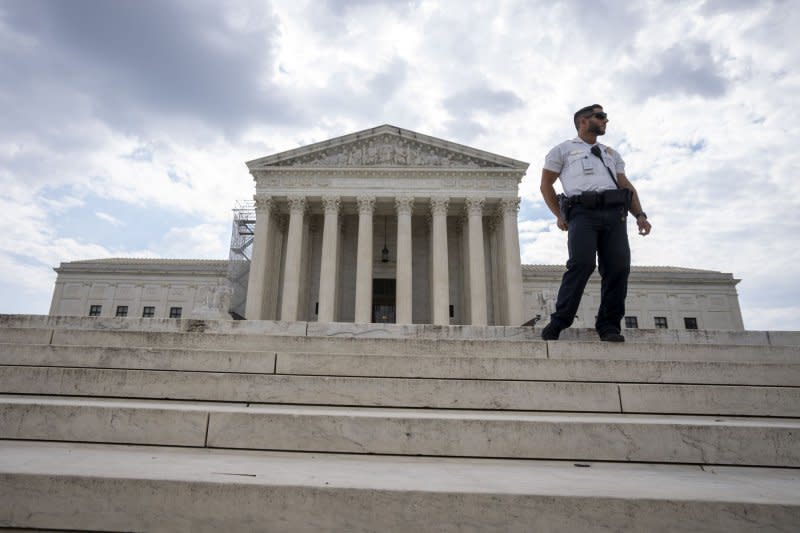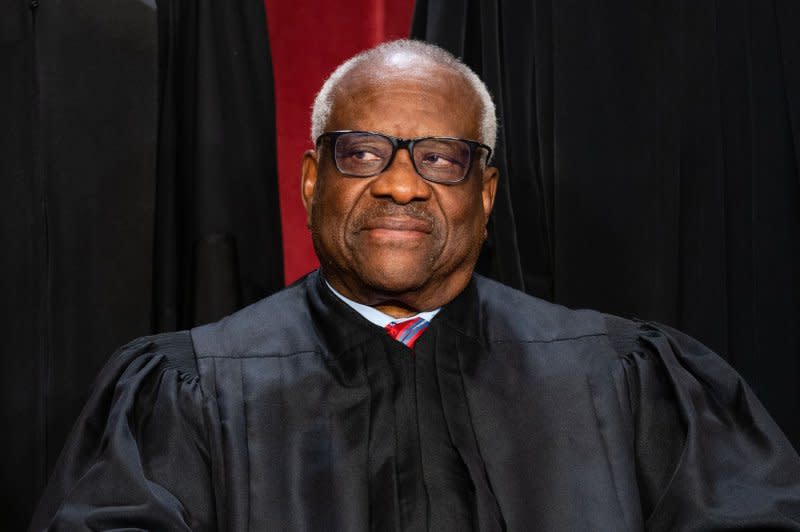U.S. Supreme Court hears arguments in S.C. gerrymandering dispute

- Oops!Something went wrong.Please try again later.
- Oops!Something went wrong.Please try again later.
- Oops!Something went wrong.Please try again later.
- Oops!Something went wrong.Please try again later.
- Oops!Something went wrong.Please try again later.
WASHINGTON, Oct. 11 (UPI) -- The Supreme Court heard arguments Wednesday in a legal dispute to determine whether a South Carolina congressional district was gerrymandered to exclude thousands of Black voters.
The American Civil Liberties Union, which filed the suit alongside the South Carolina branch of the NAACP and other Democratic stakeholders, issued a report Tuesday declaring the legal case critical to the future of voting rights in America, while calling on the Supreme Court to find the current map unconstitutional.
The outcome the could impact how states use politics and race to create their legislative districts in the future.
Historically, South Carolina's first congressional district, which includes Charleston, the state's most populated city, has been a Republican stronghold. In 2018, U.S. Rep. Joe Cunningham, a Democratic candidate, won the race by a narrow majority, flipping the historically Republican seat.
After losing his re-election bid in 2020 by another small margin to Republican Rep. Nancy Mace, the Republican-dominated Legislature divided Charleston County in 2021, excluding 80% of its Black population, which was distributed to other districts.

According to the 14th Amendment's equal protection clause, race cannot serve as a factor in creating new districts, and states cannot intentionally weaken a racial group's vote for political gain.
So, in January, a three-judge panel ordered that House District 1 maps be redrawn by the end of March after holding that race factored into Republican efforts to reconfigure one of the state's seven congressional districts held by Democrats.

However, a revised map was never produced as the case remained on appeal at the Supreme Court. That delay has allowed the GOP to strengthen its grip in a previous Democratic stronghold.
While the lower court ruled South Carolina's Republican Legislature purposefully excluded large portions of the Black community to keep a Republican majority in the district, the plaintiff and president of the South Carolina Senate, Thomas C. Alexander, claimed its maps were based on political affiliation and not race.

Republicans, led by South Carolina Senate President Thomas Alexander, appealed the ruling to the high court in an effort to keep the congressional seat in the hands of incumbent, Republican Nancy Mace, who won handily with the redrawn map by 14% in 2022.
Alternative maps, which have been used in racial gerrymandering cases to show that a race-blind redistricting map is achievable, have served as useful tools in determining the intent behind maps.
"We normally have an alternative map in these redistricting cases, but we do not have one here," Justice Clarence Thomas said during the oral arguments. "In these instances where you have a high correlation between race and political affiliation, how would you constitutionally disentangle it?"
Without an alternative map, direct evidence of discrimination and the absence of odd-shaped gerrymandered districts, several of the justices, including Chief Justice John Roberts, said this case was unique in its lack of direct circumstantial evidence.
Justice Elena Kagan, however, said she believed that while alternative maps have been used as a strong tool, she didn't think they were always necessary.
Citing Cooper v. Harris, a racial gerrymandering case before the Supreme Court in 2017, Kagan said the plaintiff's job is to persuade the court that race, instead of politics, served as the intent in mapmaking.
According to the equal protection clause, she said she doesn't believe plaintiffs must submit evidence to be successful.
"The alternative map requirement, I mean, doesn't exist," Justice Kagan said. "An alternative map is merely an evidentiary tool. Neither its presence nor its absence can itself resolve a racial gerrymandering case."
While the Democratic stakeholders acknowledged their lack of direct evidence, they claimed their expert evidence succeeded in distinguishing between race and politics.
That expert evidence, which examined the South Carolina Legislature's use of a racial target, revealed its dependency on Charleston County's racial demographics throughout their mapmaking process.
Using one election map from the 2020 election between former President Donald Trump and President Joe Biden, the defendants said the plaintiff could not have relied on political evidence because there wasn't enough to generate useful maps.
"Four of the five heaviest Black precincts were moved out of Congressional District 1," said Leah Aden, representative for the South Carolina State Conference of the NAACP. "By contrast, only five of the 17 majority white precincts were removed."
While the justices stood divided in their assessments of the evidence presented by both parties, the court will come to a decision before the end of its term in June.
If the map is redrawn again as a result of the high court ruling, it would likely make the district more competitive, but wouldn't necessarily assure an outright victory for either Democrats or Republicans, political experts said.

